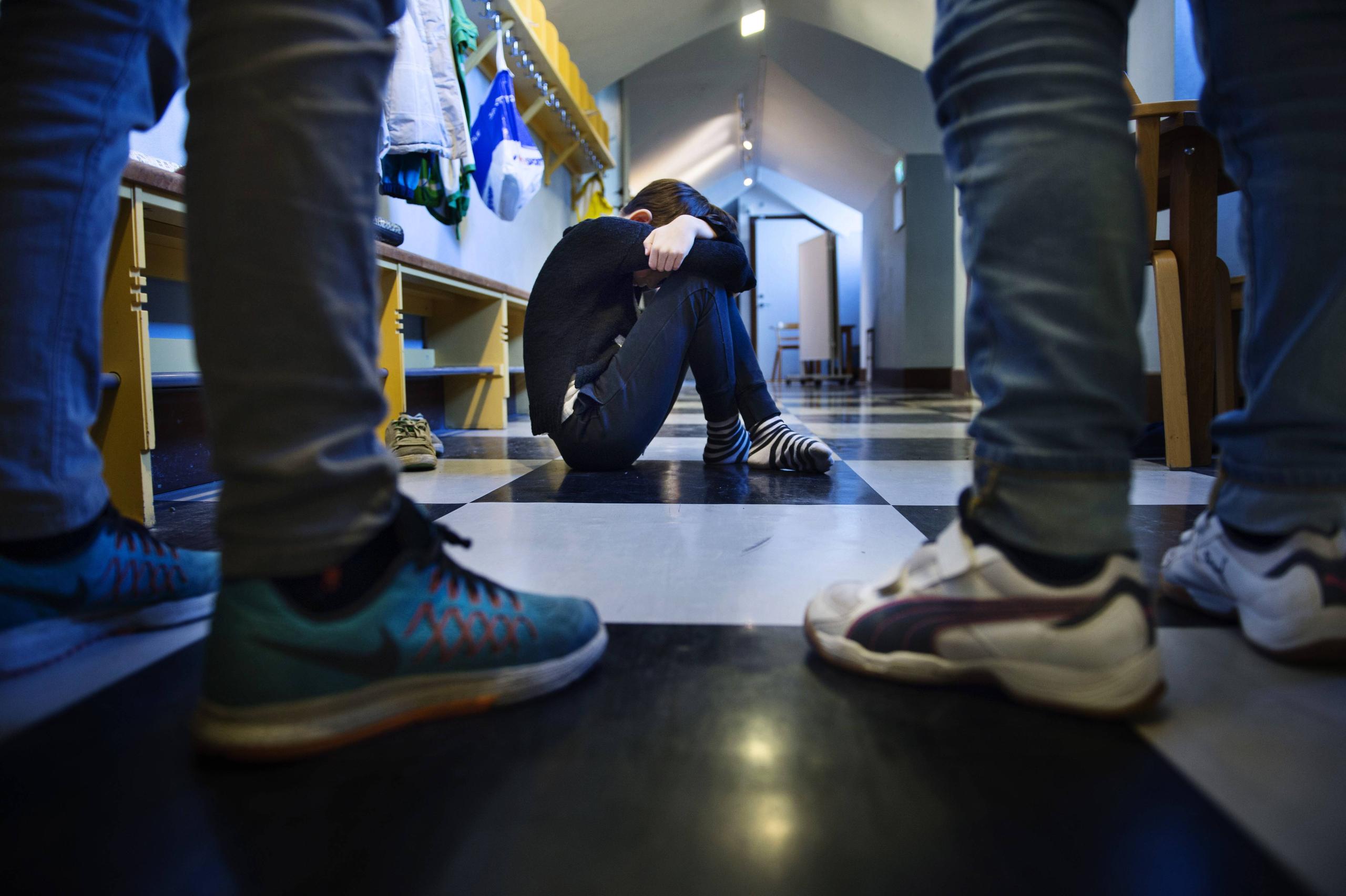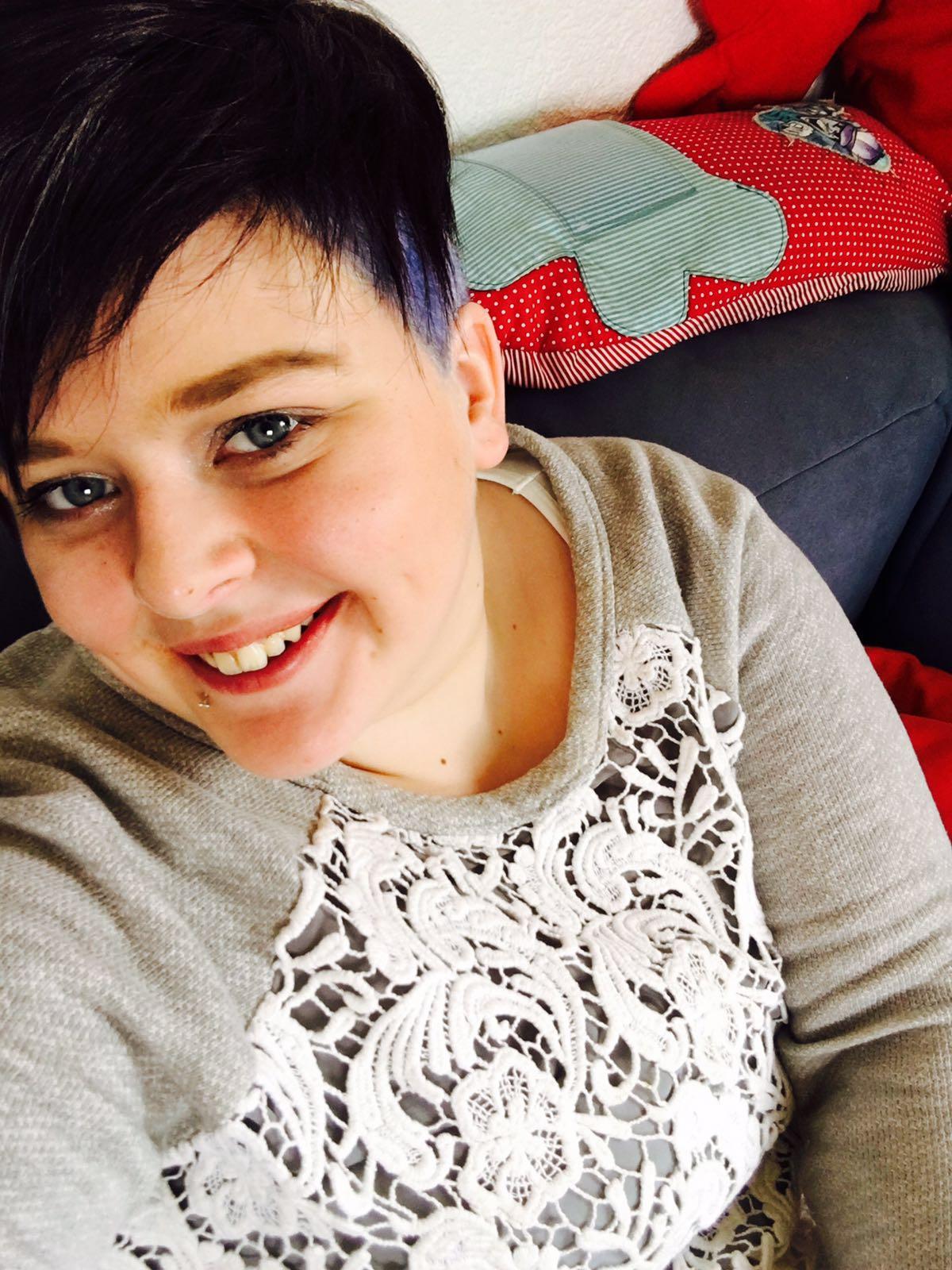Bullying at school: breaking the silence to prevent suffering

School has become a nightmare for 5-10% of schoolchildren in Switzerland. Victims of school bullying often suffer in silence and experience long-term consequences. Experts recommend boosting prevention in schools.
“What are you doing here? You take up too much space. Go kill yourself!” The words are violent, extreme. Yet they used to be part of Loane Gosteli’s daily life: insults, taunts and threats turned her time at school, in a small village in canton Jura, into a living hell.
“For nine years, I walked to school as slowly as possible with a knot in my stomach. I even pretended to be sick at times in order to stay at home,” says the young woman, now 20. When she got a mobile phone, the bullying became constant, through text messages or the internet.
A weight gain following her parents’ divorce when she was about six was the start of the young woman’s ordeal. She became trapped in a vicious circle: “The more other students would mock me, the more weight I gained and the more they taunted me.”
During classes, children threw things at her – pencils, scraps of paper. They broke into laughter whenever she spoke up in class.
The bullying soon took its toll: her grades plummeted and she lost her self-esteem. “I didn’t do anything during my last three years at school. I didn’t listen to what the teacher was saying and spent my time doodling in my notebooks as a way of escaping,” Gosteli remembers.

Her only hope: to finish school and do an apprenticeship as a pastry chef. To finally leave the bullying behind her. But her hope was unfounded: the other kids continued to make fun of her.
“They said I had chosen this trade so I would be able to eat more,” she says. The young woman could no longer put up with the situation: she left her apprenticeship and tried to kill herself.
It was only thanks to therapy in an institution that she was able to move on. She is now training to be a hairdresser, which she enjoys. More importantly, she is able to talk about the bullying. This is a significant step, and gives her a chance to look ahead, even though her demons have not entirely disappeared: “Everything is going well at the salon, but I’m still bullied occasionally during classes.”
Ending the cycle of silence
Together with Charlène Kobel, another former victim of bullying, Gosteli has set up an internet platform called “Brisons le silenceExternal link”. It enables young people and their parents to share their stories, some of which are published on the site. The two young women are convinced that people need to speak up to fight bullying, and they intend to raise awareness in schools by telling their stories.
Kobel, now 25, also endured taunts from classmates throughout her years at school: “I was an easy target because I was sensitive and I cried easily, sometimes for no reason.” But she was unable to talk about what she was going through. She said nothing to her parents or her brother and sister, afraid that they would try to help and end up making things worse by provoking retribution.
As a result, the young woman cut herself off, shutting herself up in the dark to write bleak texts in which someone always died. She eventually found a way of expressing her misery by writing a short story entitled “Broken”, which deals with school bullying.
One long-suffering child per class
These stories are far from unusual: 5-10% of pupils in Switzerland are believed to be victims of school bullying, according to a study conducted in canton Valais. “This is just below the international average, which is between 5 and 15%, but it’s fair to say that almost one student per class is affected,” says Zoé Moody, a researcher at the University of Geneva’s Centre for Children’s Rights StudiesExternal link.
There is no typical profile of a victim, but Moody points out that any distinctive trait in a child can be a risk factor, from weight or ethnicity to sexual orientation or intelligence. The chain of circumstances can have tragic consequences over the long run. Moody mentions isolation, absenteeism, dropping out of school, self-harm, depression, suicide attempts or even suicide.
Speaking up seems to be enough sometimes to break the vicious circle of bullying. Children can learn at school how important it is to dare to denounce bullies.
“No-win situation”
Experts describe harassment as a triangular relationship in which everyone has a role, which some may be locked into. “Victims often end up identifying with their role, for instance by keeping a low profile or by wearing loose-fitting clothes, which allows the bullying to take root over the long term,” says Moody, who has been involved in a study of peer harassment in schools in canton Valais.
Not only can the suffering of victims lead to a fatal outcome, but bullies suffer too. “It’s always a no-win situation,” the researcher says. Several studies have shown that bullies often move on to criminal activities as adults. According to one study, 36% of bullies between the ages of 13 and 16 become delinquents between the ages of 16 and 24.
Bullies show little empathy and, as a result, they “have trouble integrating and developing socially. They are often feared by the group and their friendships are only based on the law of the strongest,” Moody says.
As for witnesses, they are also confined to a passive role because they are afraid to intervene. Moody says that 87% of children witness bullying at some stage during their time at school.
Translated from French by Beatrice Murail

In compliance with the JTI standards
More: SWI swissinfo.ch certified by the Journalism Trust Initiative











You can find an overview of ongoing debates with our journalists here . Please join us!
If you want to start a conversation about a topic raised in this article or want to report factual errors, email us at english@swissinfo.ch.